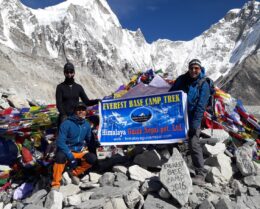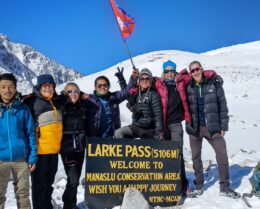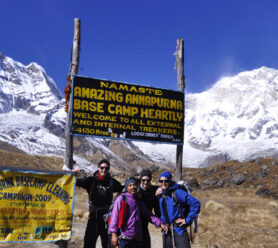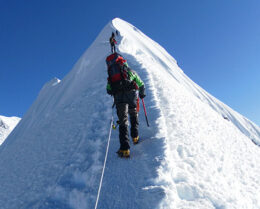Exploring the Beauty and Culture of the Everest View Trek
UPDATED ON 24 April, 2023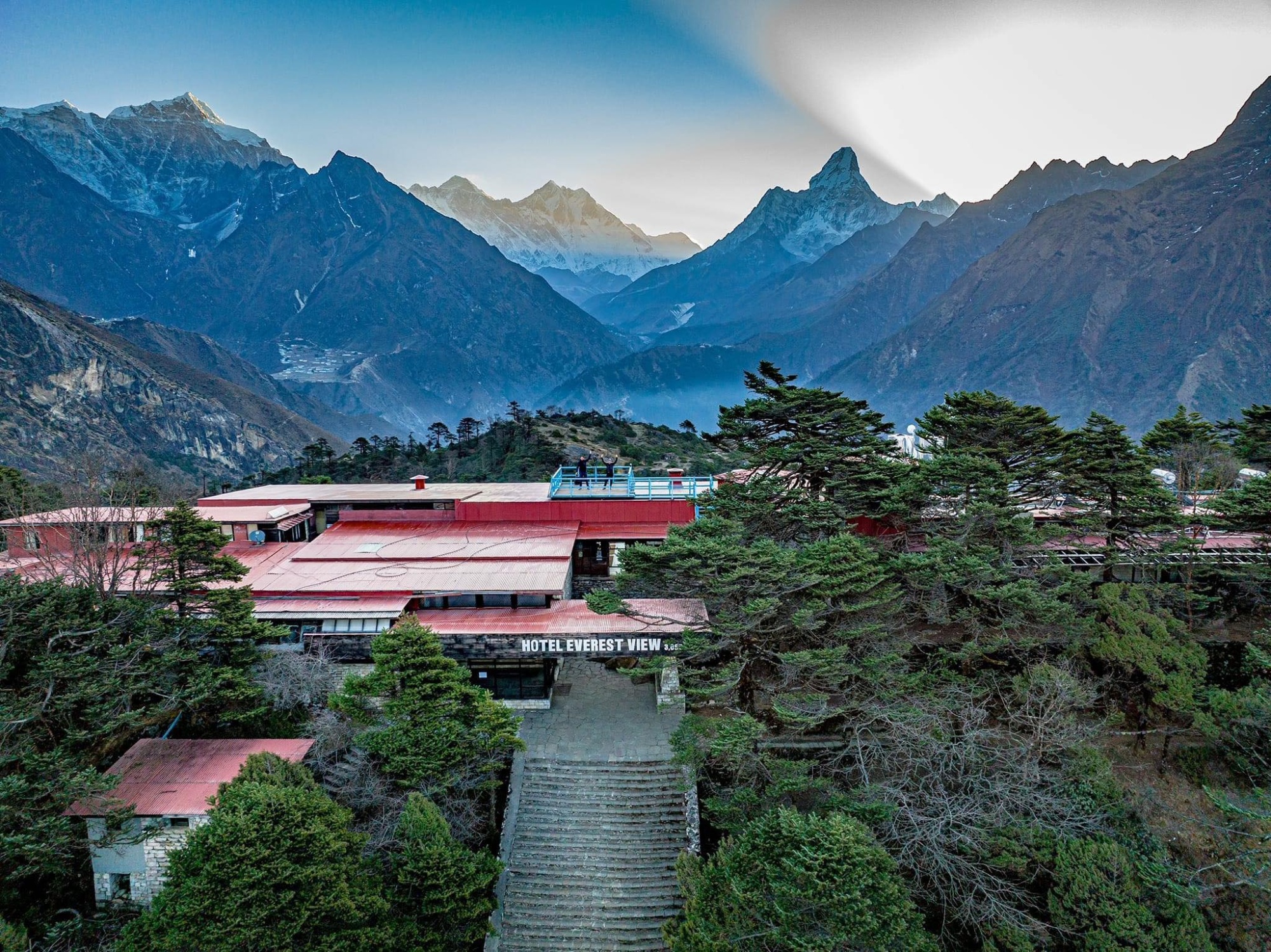
Hiking in the Himalayas is a once-in-a-lifetime adventure. The Everest View Trek is one of the most popular treks in the Khumbu region of Nepal. This trek offers stunning views of the highest mountain in the world, Mount Everest, as well as other peaks like Lhotse, Nuptse, and Ama Dablam.
The trek takes you through picturesque villages, lush forests, and along the Dudh Koshi River. This blog will take you through everything you need to know about the Everest View Trek.
Overview of the Everest View Trek
The Everest View Trek is a short trek in the Everest region of Nepal. A UNESCO World Heritage site, Sagarmatha National Park, is traversed throughout the walk. The national park is home to rare and endangered species such as snow leopards, Himalayan black bears, and red pandas.
The trek starts with a scenic flight from Kathmandu to Lukla, the gateway to the Everest region. From Lukla, you trek to Namche Bazaar, the trading hub of the Khumbu region, and then to the Everest View Hotel, the highest point of the trek at 3,880 meters.
The trek is a tea house trek, which means that you stay in tea houses along the way. The tour takes about 7-8 days to complete and covers a distance of approximately 38 kilometers.
Acclimatization Day
Acclimatization is an essential part of trekking in the Himalayas. As you gain altitude, the air pressure decreases, and the amount of oxygen in the air reduces. Consequently, altitude sickness might result, which is potentially fatal.
To avoid altitude sickness, it is crucial to acclimatize by gradually ascending and spending an extra day at a higher altitude to allow your body to adjust. The Everest View Trek includes an acclimatization day in Namche Bazaar.
Specifically, on this day, you can explore the town, visit the local market, and hike to the nearby Everest View Hotel for panoramic views of the mountains.
Sagarmatha National Park
In the eastern Nepalese Himalayas, there is a protected area called Sagarmatha National Park. The national park is home to some of the world’s highest peaks, including Mount Everest.
A variety of plants and animals may be found in the park, which has a surface area of 1,148 square kilometers. The Sherpa ethnic group, which has been in the region for generations, also calls the park home. The national park has several trekking routes, including the Everest View Trek.
Travel Insurance
Travel insurance is essential when trekking in the Himalayas. Trekking in remote areas can be risky, and accidents can happen. Travel insurance can help you in case of medical emergencies, flight cancellations, or other unforeseen circumstances.
It is important to check that your insurance covers high-altitude trekking and helicopter rescue if necessary.
Weather Condition
The weather in the Everest region can be unpredictable, and it is essential to be prepared for all weather conditions. The best time to trek in the Everest region is from March to May and from September to November when the weather is relatively stable, and the skies are clear.
During these months, the temperatures are mild, and the days are sunny. The monsoon season from June to August can bring heavy rainfall, and the winter months from December to February can be extremely cold.
Flight from Kathmandu to Lukla
The flight from Kathmandu to Lukla is one of the most scenic flights in the world. Similarly, The flight takes you over the Himalayas, and you can see stunning views of the peaks from the airplane window.
Moreover, the flight is also known for its challenging landing at the Lukla airport, which is located at an altitude of 2,860 meters. The runway at Lukla is short and steep, making it one of the most dangerous airports in the world. However, the experienced pilots make the landing seem effortless.
Trek to Phakding
After landing in Lukla, the trek begins with a walk to Phakding. During this trek to Phakding, you will experience a gentle descent through pine forests and along the Dudh Koshi River.
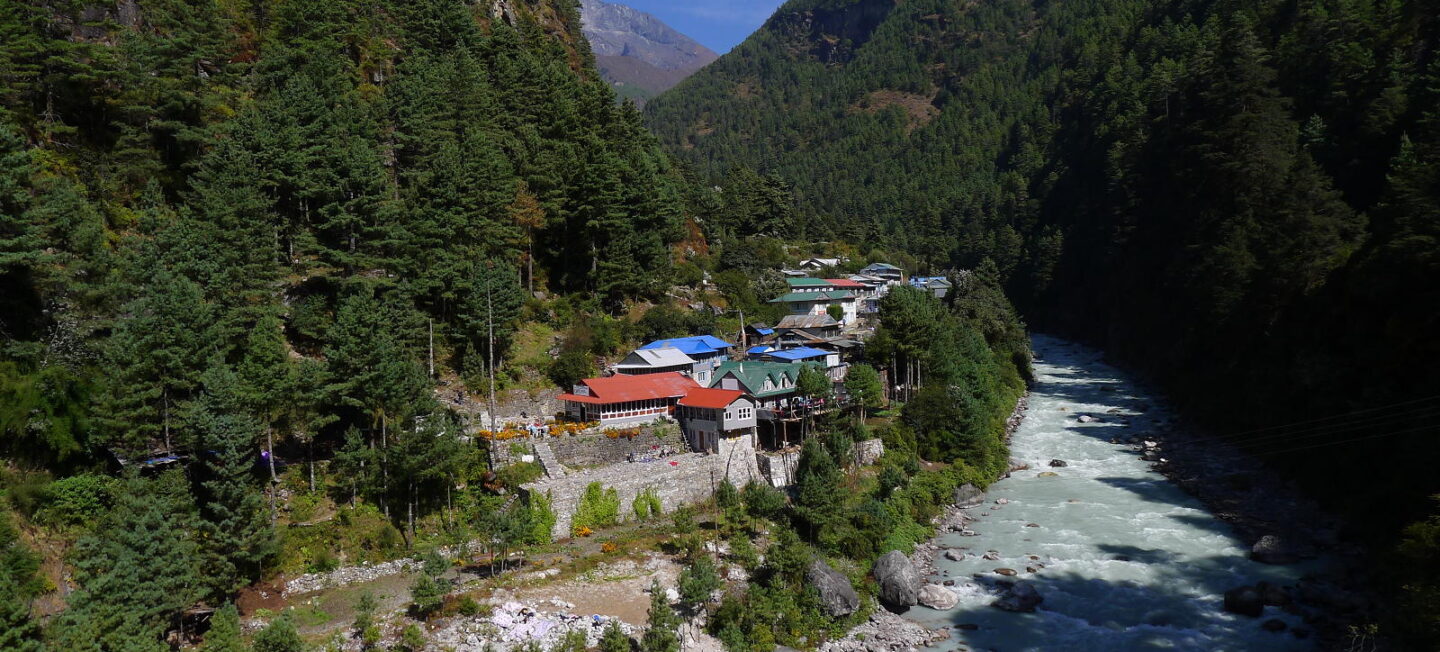
The trail passes through several suspension bridges, which offer stunning views of the river and surrounding landscapes. Additionally, the first day of the trek is relatively easy. It is a good opportunity to acclimatize to the altitude.
Trekking Guide
Trekking in the Everest region can be challenging, and it is essential to have an experienced guide to assist you. A trekking guide can provide valuable insights into the local culture and help you navigate the trails.
The guide can also help you with acclimatization and ensure a safe and enjoyable trek. It is essential to hire a licensed and experienced guide who is familiar with the region.
Trek to Namche Bazaar
The trek to Namche Bazaar is a steep ascent through forests and across suspension bridges. Namche Bazaar is the trading hub of the Khumbu region and offers stunning views of the surrounding mountains.
Similarly, Namche Bazaar has several shops, restaurants, and cafes, making it an excellent place to rest and acclimatize. Moreover, Namche Bazaar also has a weekly market where locals sell handicrafts, food, and other items.

Breakfast, Lunch, and Dinner
Food is an essential part of the Everest View Trek. The tea houses along the trek offer breakfast, lunch, and dinner. Breakfast typically includes tea or coffee, toast, eggs, and porridge. Lunch is usually a light meal consisting of soup, noodles, or rice.
Dinner is the main meal of the day and typically includes dal bhat, a traditional Nepali dish that consists of rice, lentil soup, and vegetables. The tea houses also offer snacks like chocolate bars, biscuits, and fruit.

Acclimatization Day
Acclimatization is an essential part of the Everest View Trek. It means getting used to the altitude and the thinner air.
The trek includes several acclimatization days, where you stay in the same place and do short hikes to higher altitudes. Acclimatization helps your body adjust to the altitude and reduces the risk of altitude sickness.
Weather Conditions
The Everest area can see abrupt and swift changes in the weather. The months of March through May and September through November are ideal for trekking in the Everest Region. These months feature beautiful mountain vistas thanks to the often dry, calm weather and bright skies.
However, trekkers should be prepared for cold temperatures and occasional snowfall, especially at higher altitudes.
Travel Insurance
Travel insurance is essential for anyone planning to trek in the Everest region. Moreover, travel insurance can cover emergency medical expenses, emergency evacuation, trip cancellation, and loss of baggage.
Trekking in the Everest region can be challenging and can pose risks to your health and safety. It is important to choose a travel insurance policy that covers trekking at high altitudes and provides adequate coverage.
What will you come across in the Everest view trek?
Panoramic View
The Everest View Trek offers stunning panoramic views of the surrounding mountains, including Mount Everest, Lhotse, Nuptse, and Ama Dablam.
Similarly, the trek takes you through forests, across suspension bridges, and along glacial rivers, offering breathtaking views at every turn. The walk also provides a window into the customs and way of life of the area.

Sagarmatha National Park
Sagarmatha National Park is a protected area in the Khumbu region of Nepal. Many tall peaks, including Mount Everest, may be found in the park. The park is also home to several endangered species, including the snow leopard and the red panda.
Similarly, the park covers an area of 1,148 square kilometers and is a UNESCO World Heritage Site. Moreover, the park has several trekking routes, including the Everest View Trek and the Everest Base Camp Trek.
Everest View Hotel
The Everest View Hotel is a luxury hotel located in Syangboche, Nepal. The hotel offers stunning views of Mount Everest and the surrounding mountains. One of the tallest hotels in the world, the hotel is at a height of 3,880 meters.

The hotel is accessible only by helicopter or a short hike from Namche Bazaar. The hotel offers luxury accommodations, including heated rooms, hot showers, and fine dining.
Khumbu Region
The Khumbu region is a region in the Himalayas of eastern Nepal. The Khumbu region is home to Mount Everest and several other high peaks. The region is also home to the Sherpa people, who have lived in the area for centuries.
The Khumbu region has several trekking routes, including the Everest View Trek and the Everest Base Camp Trek. The region is famous for its stunning views of the mountains, glaciers, and valleys.
Mt.Everest 8,848.86m
The tallest peak in the world, Mount Everest, which is 8,848.86m meters above sea level, is also known as Sagarmatha in Nepali and Chomolungma in Tibetan. Mount Everest is located in the Khumbu region of Nepal and is part of the Himalayan mountain range.
Mount Everest was first submitted by Sir Edmund Hillary and Tenzing Norgay in 1953. Since then, thousands of climbers have attempted to climb the mountain, and many have lost their lives in the process.

Tea Houses
Tea houses are an essential part of the Everest View Trek. They are small lodges that offer basic accommodation and food to trekkers. The tea houses in the Everest region are typically run by Sherpa families and offer a unique insight into the local culture.
Similarly, tea houses provide a comfortable and affordable place to stay during the trek. Additionally, the tea houses offer simple but delicious food, including traditional Nepali dishes like Dal bhat, Momos, and Thukpa.
FAQs
What is Everest View Trek?
Everest View Trek is a short and easy trekking route in the Everest region that offers stunning views of Mount Everest and other snow-capped mountains in the Himalayas.
This trek is perfect for those who want to experience the beauty of the region but have limited time or may not be physically fit for longer treks.
What is the duration of the Everest View Trek?
Everest View Trek is a 9-day trek that starts and ends in Kathmandu, Nepal. The trek itself takes 5 days to complete, with 4 days for acclimatization and travel.
What is the difficulty level of the Everest View Trek?
Everest View Trek is considered an easy to moderate trek, suitable for all types of trekkers, including beginners. However, some physical fitness is required, as the trek involves walking for 4-5 hours per day on uneven terrain.
What time of year is ideal for the Everest View Trek?
The best time to go for Everest View Trek is during the autumn (September to November) and spring (March to May) seasons. These seasons offer clear skies and comfortable temperatures, making it easier to enjoy the views and complete the trek.
What is the highest altitude reached during the Everest View Trek?
The highest altitude reached during Everest View Trek is 3,870 meters (12,697 feet) at Tengboche, which is the highest point of the trek. However, the trek is designed to allow for gradual acclimatization, minimizing the risk of altitude sickness.
Conclusion
The Everest View Trek is a challenging but rewarding trek that offers stunning views of the Himalayas and an insight into the local culture. The trek includes several acclimatization days, which are essential to reducing the risk of altitude sickness.
Moreover, the trek takes you through forests, across suspension bridges, and along glacial rivers, offering breathtaking views at every turn. Similarly, the trek also includes several tea houses, which offer basic accommodations and delicious food.
The Everest View Trek is a must-do for anyone who loves trekking and wants to experience the beauty of the Himalayas.
You may also like awesome Packages:

